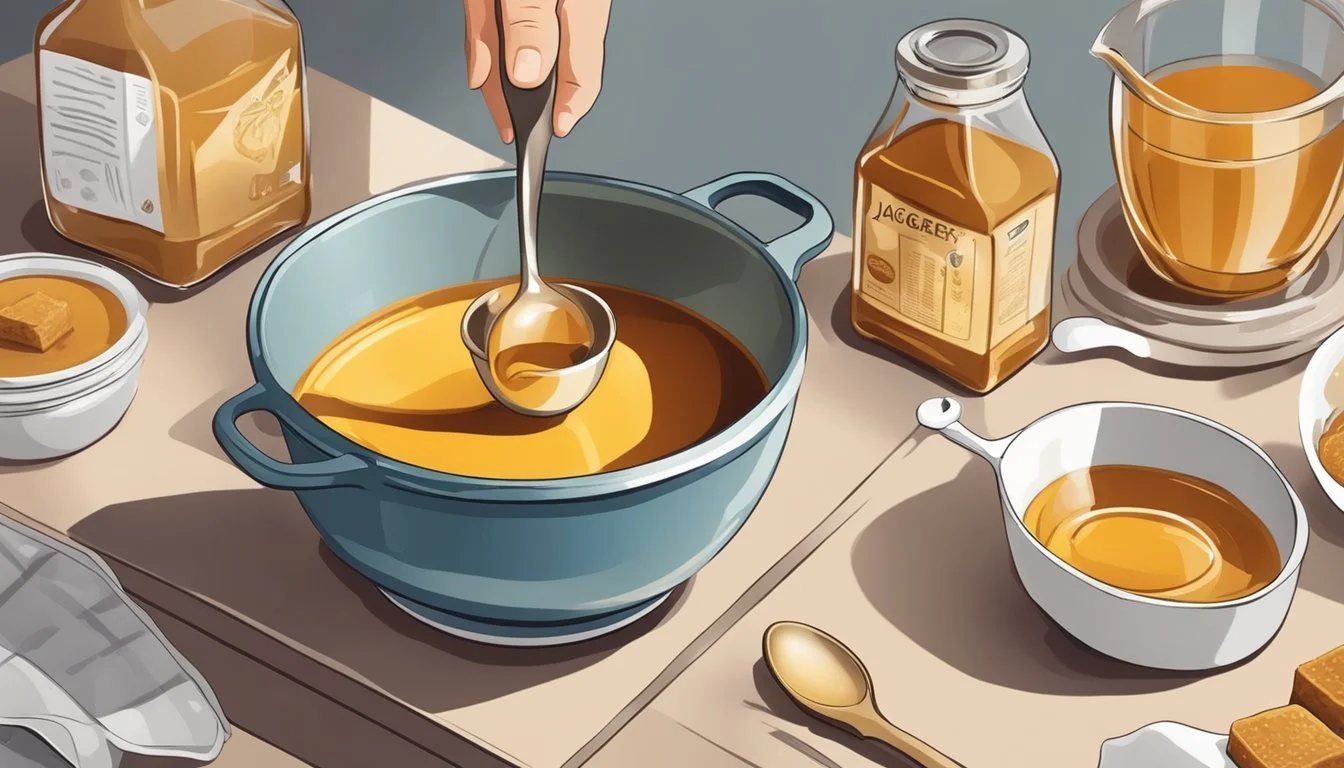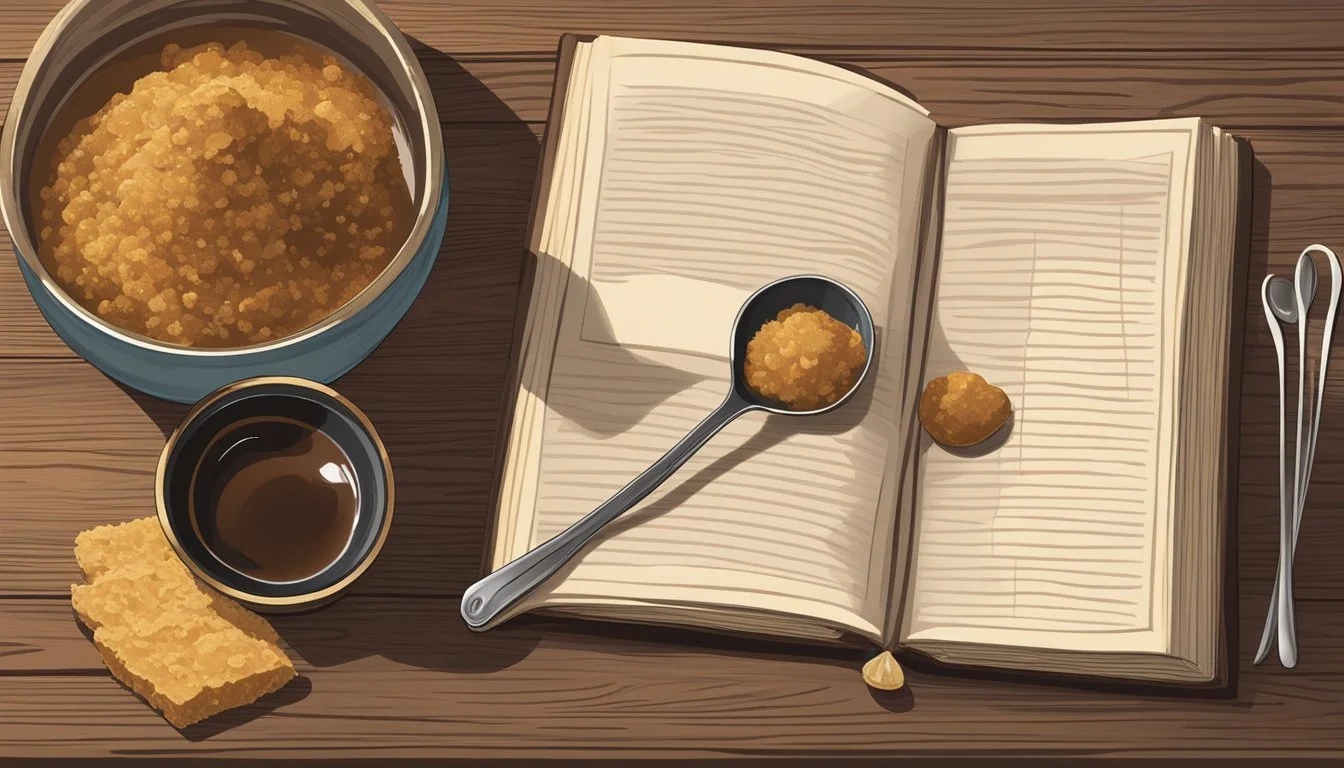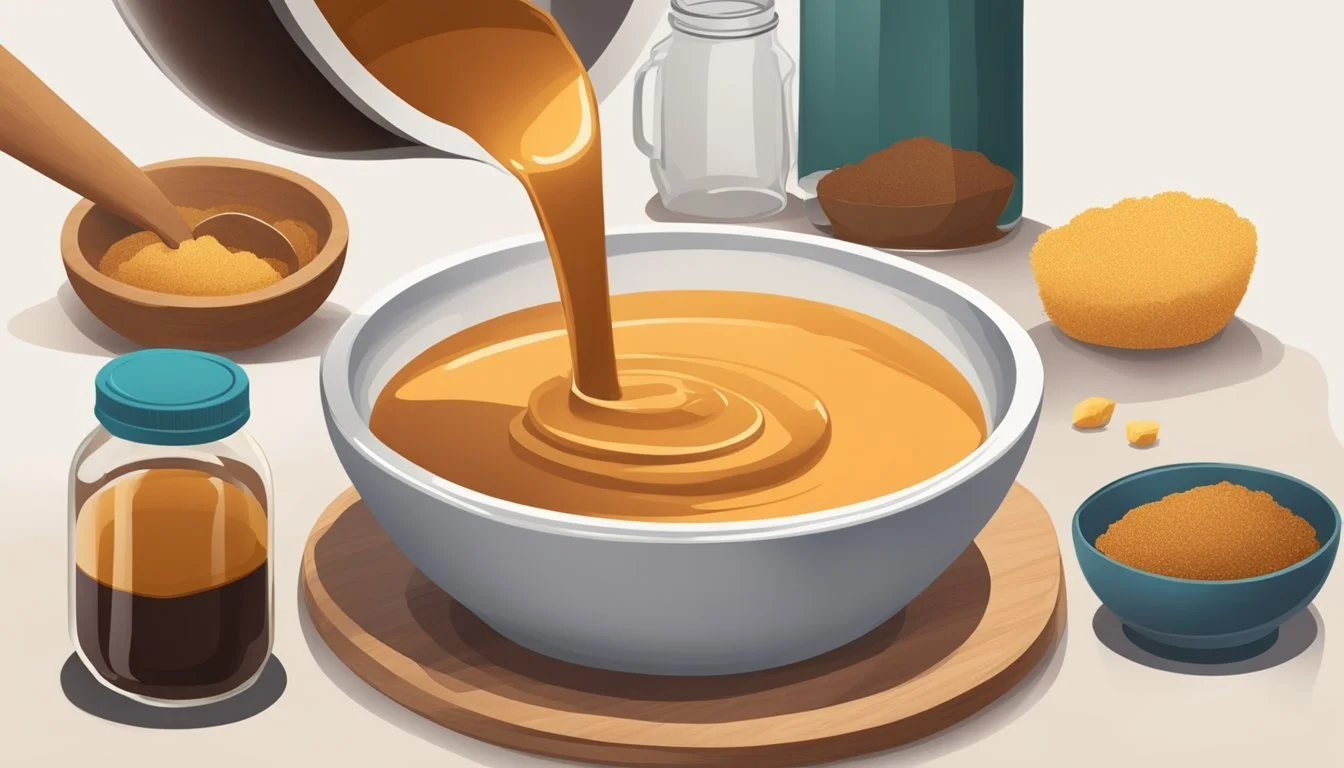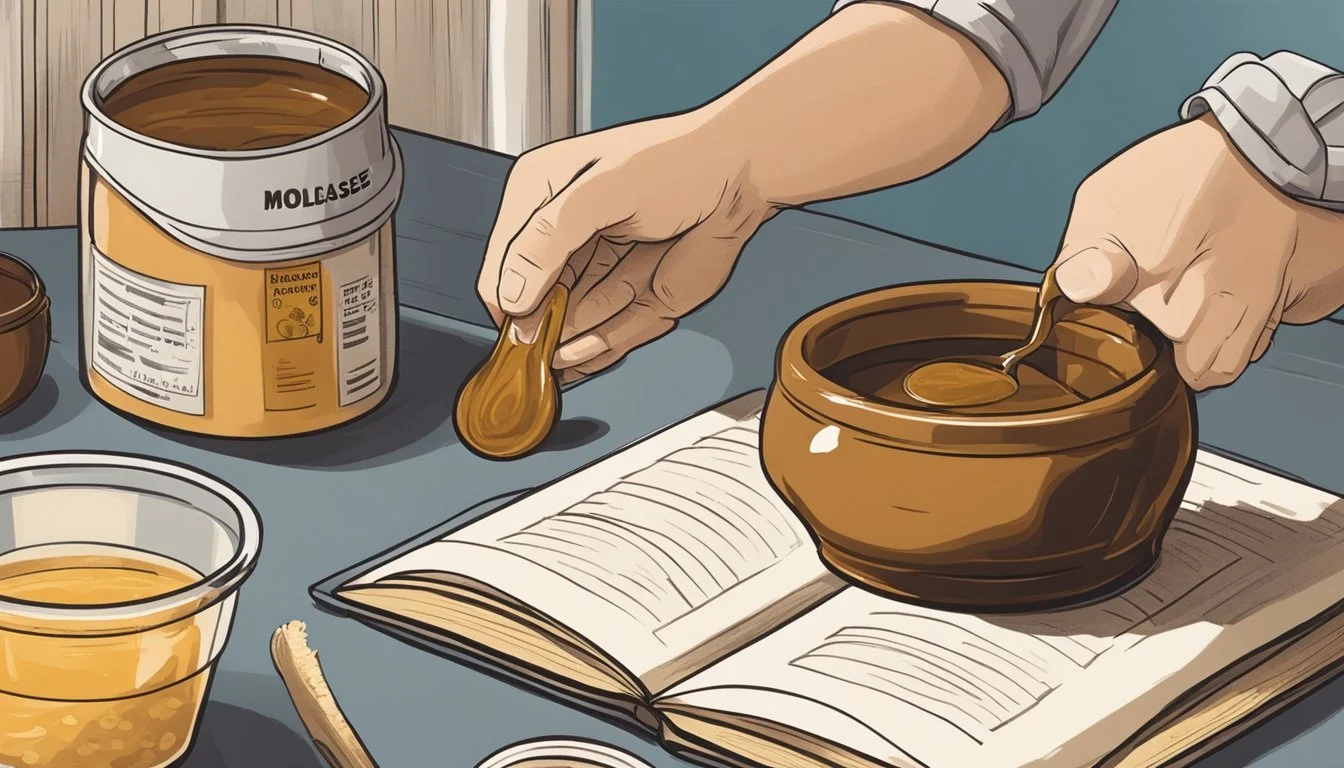How to Substitute Jaggery for Molasses in Recipes
A Simplified Guide
When cooking or baking, ingredient substitutions can be a necessity, whether due to dietary restrictions, allergies, or simply because the pantry is missing a component. Jaggery is often chosen as a substitute for molasses due to its similar sweetness and moisture content. Understanding how to substitute jaggery for molasses in recipes allows for greater flexibility in the kitchen and can introduce a nuanced flavor to classic dishes.
Jaggery, a traditional unrefined sugar made from sugar cane or palm, imparts a rich, caramel-like flavor distinct from that of molasses but comparable in depth and sweetness. This natural sweetener is found in various textures, from granular to solid blocks, and can be used in an array of recipes. When replacing molasses with jaggery, one should consider the recipe's desired outcome, as the substitution may affect the color and taste of the final product.
Substituting jaggery for molasses can be particularly useful in baking, where it offers the necessary sweetness and also contributes to the moisture of cakes and cookies. While jaggery can adjust the flavor profile slightly, it generally complements the ingredients found in baked goods, such as spices and flavors in gingerbread or pumpkin pie. Adapting recipes to use jaggery not only incorporates a traditional ingredient but also can cater to those preferring less processed sugars.
Understanding Jaggery and Molasses
Jaggery and molasses, two distinctive sweeteners, originate from sugarcane but differ significantly in their production and characteristics. These natural sweeteners are not only varied in color and consistency but also in their nutritional profiles.
Origins and Production
Jaggery is an unrefined sugar made by boiling sugarcane juice. Unlike refined sugars, jaggery retains its molasses content, leading to higher nutrient and mineral levels, such as iron and certain vitamins. It's commonly formed into blocks after the juice is reduced to a thick paste and solidifies upon cooling.
Molasses, by contrast, is a byproduct of the sugar refining process. It comes from the syrup left over after sugarcane juice has been boiled and the crystalline sugars extracted. There are different grades of molasses, ranging from light to blackstrap, each with varying degrees of sugar content, flavor, and nutrient concentration.
Characteristics and Flavor Profile
Jaggery has a rich, caramel-like flavor with a sweetness that has depth due to the preservation of certain impurities and minerals. It typically presents itself in golden to dark brown hues. The texture can be soft and gooey or hard and grainy, depending on how it's processed.
Molasses has a stronger, bittersweet flavor profile, and it's generally denser and sticker than jaggery. Its color ranges greatly, from light gold to nearly black based on the number of boiling cycles it's undergone. Molasses is rich in nutrients, particularly in the dark and blackstrap varieties, with significant levels of iron and other minerals due to the concentration of sugars, vitamins, and other elements during the refining process.
Analyzing the Role of Sweeteners in Recipes
When altering sweeteners in recipes, understanding their role is crucial. Sweeteners do more than just impart sweetness—they affect moisture, texture, and color.
Function of Sugars in Baking
In baking, sugars are pivotal ingredients that serve multiple purposes. They are not just about sweetness; sugars:
Create structure and texture: Sugars interact with proteins to provide baked goods their structure. In bread, for example, sugar feeds yeast, which helps the dough rise and creates a tender crumb.
Influence color and flavor: The caramelization of sugars contributes to the golden-brown crust of cakes and cookies. The type of sugar used can impart different flavors, from the mild taste of white sugar to the deep, earthy flavor of molasses.
Affect moisture: Sugars are hygroscopic, meaning they absorb moisture from the air. This characteristic helps in keeping baked goods moist for longer periods.
Sweetness and Texture Influence
The sweetness level and textural contribution of sweeteners vary greatly:
Jaggery versus Molasses: Jaggery, derived from sugarcane or palm, has a sweetness that is less intense than molasses but is accompanied by a hint of caramel. In contrast, molasses, especially the dark or blackstrap variety, has a more robust, slightly bitter flavor profile.
Texture Contribution: Jaggery often comes in a solid form that must be grated or melted, which can introduce slight textural differences in recipes like cookies or desserts, potentially making them softer and denser. Conversely, molasses is a liquid that adds chewiness and moisture to the baking.
When substituting jaggery for molasses, one should consider these factors to maintain the desired outcome in recipes.
Substitution Basics
When substituting jaggery for molasses, it's crucial to understand the correct ratios and how the flavor profile will be affected. Substitutes should provide similar sweetness and consistency to maintain the integrity of the recipe.
Understanding Ratios and Measurements
In recipes, it is generally possible to substitute jaggery for molasses in a 1:1 ratio, meaning if the recipe calls for one cup of molasses, one can use one cup of jaggery. However, as jaggery is slightly less sweet and has a different texture, slight adjustments may be needed. The exact proportions may vary depending on the specific type of jaggery used, as it can come in various levels of refinement and moisture content.
Adjusting for Flavor and Sweetness
While molasses has a distinct, rich, and somewhat bitter taste, jaggery brings a more caramel-like sweetness to dishes. Due to this difference:
One might need to reduce other sweet components in the recipe to balance the overall flavor.
In some cases, adding a small amount of a darkening agent or acidic component, like dark brown sugar or lemon juice, can help mimic molasses’ complex flavor profile.
For those looking for a healthier alternative, replacing molasses with jaggery can also result in a modest increase in nutritional value, as jaggery generally contains more minerals and antioxidants than refined sugars.
Jaggery as a Substitute for Molasses
Jaggery can be used as a suitable substitute for molasses owing to its caramel-like flavor, though it does exhibit a more earthy tone. It is less viscous than molasses and often comes in solid blocks or granulated form.
When to Use Jaggery
Jaggery is suitable for use as a molasses substitute in recipes where a rich, sweet flavor is desired without the intense depth that molasses typically provides. It works well in:
Baked goods such as cakes and cookies
Marinades, where a subtle sweetness is required
Sauces and dressings that benefit from a hint of sugar without overpowering other flavors
Consider the following when using jaggery:
Flavor Profile: Expect a milder sweetness with an earthy note.
Color: Jaggery may not darken dishes as intensely as molasses.
Texture: Expect a slight texture change, as jaggery does not contribute the same sticky heaviness.
How to Prepare Jaggery for Use
Preparing jaggery for use in recipes involves making it into a form that is more akin to the thick syrup consistency of molasses. Follow these steps:
Grate or break the jaggery block into smaller pieces to help it dissolve more easily.
Use equal parts of jaggery to molasses as a starting point, adjusting to taste.
Dissolve jaggery in a minimal amount of hot water to create a thick syrup:
For 1 cup of jaggery, start with 1/4 cup of hot water.
Stir until fully dissolved and uniform.
For recipes requiring dry sweeteners, jaggery powder may be a more suitable form, sparing the need to dissolve. In such cases, one can directly substitute jaggery powder for molasses by volume or weight, keeping in mind the lighter flavor and color profile.
Alternative Sweetener Comparisons
This section provides a comparison of various sweeteners that can serve as substitutes for molasses, focusing on brown sugar, white sugar, and other natural sweeteners. The taste, texture, and sweetness level will differ with each alternative, making some more suitable for certain recipes than others.
Brown Sugar and White Sugar
Brown Sugar: Brown sugar is essentially white sugar with molasses added back into it, offering a moist, clumpy texture and a deep, caramel-like flavor. Light brown sugar has a milder flavor due to less molasses content, while dark brown sugar, richer in molasses, provides a more intense molasses flavor which works well as a substitute for jaggery in recipes that require a similar depth of taste.
White Sugar: Although it lacks the molasses flavor, white sugar can be an alternative in recipes where the moisture from molasses is not critical. Its neutral sweetness allows it to be versatile; however, it won't provide the same rich flavor as molasses or jaggery.
Other Natural Sweeteners
Honey: Honey is a natural sweetener with a distinct flavor, rich in antioxidants. It can replace jaggery in a 1:1 ratio, offering a different but equally rich flavor profile.
Muscovado Sugar: Unrefined with a strong molasses content and flavor, muscovado sugar is a closer match to jaggery than regular brown sugar and can be used in a 1:1 substitution.
Demerara Sugar: This sugar has large, crunchy crystals and a toffee-like flavor, suitable for sprinkling on baked goods but may not dissolve as well in some recipes.
Maple Syrup: Liquid sweetener with a woodsy, caramel-like flavor that is less intense than jaggery or molasses but can impart a unique taste to dishes.
Coconut Sugar: Derived from coconut palm sap, this sugar has a caramel-like taste that is similar to jaggery, adding a distinctive sweetness to recipes.
Date Sugar: Made from dried dates, this natural sweetener brings a rich, fruity flavor that differs from molasses but can contribute a similar sweetness.
When substituting these sweeteners for molasses, one should consider the desired flavor profile and the impact on the texture of the dish.
Health and Nutritional Considerations
When substituting jaggery for molasses, it is important to understand their distinct health and nutritional profiles.
Glycemic Index and Sugar Content
Jaggery is an unrefined sweetener often considered a healthier alternative to refined sugars because of its slightly lower glycemic index (GI). The glycemic index measures how quickly foods raise blood sugar levels after ingestion. Jaggery’s GI is somewhat lower compared to refined sugars, which may contribute to a more gradual increase in blood sugar levels, making it a favourable option for those monitoring their blood sugar. Molasses, depending on its level of refinement, can also have a moderate glycemic index.
Minerals and Vitamins in Jaggery
The nutritional benefits of jaggery extend beyond its sugar content. It retains certain minerals not found in refined sugar due to its minimal processing. Jaggery contains:
Iron: Essential for oxygen transport in the body.
Calcium: Important for bone health.
Zinc: Plays a role in immune function and wound healing.
The nutritional value of jaggery may contribute to its perception as a healthier alternative. However, while jaggery provides these nutrients, it should still be consumed in moderation as part of a balanced diet.
Practical Tips for Cooking and Baking
When substituting jaggery for molasses in recipes, cooks must consider the flavor profile and consistency of the two sweeteners to achieve the desired outcome in both taste and texture.
Incorporating Jaggery in Different Types of Recipes
Cooking: In savory dishes, jaggery can replace molasses one-to-one, but chefs may need to adjust the quantity according to taste. Since jaggery is less potent, starting with an equal amount and adding incrementally ensures the dish doesn't become overly sweet.
Baking: Expert bakers recommend using grated or powdered jaggery to ensure even distribution within the dough or batter. For each cup of molasses, roughly 1 to 1 1/4 cups of jaggery can be utilized, keeping in mind that the sweetness and moisture level may vary.
Desserts: Jaggery works well in desserts, imparting a rich, caramel-like sweetness. When preparing dessert sauces or syrups, one should monitor the thickness closely as jaggery may not lend the same glossy consistency as molasses.
Beverages and Drinks: For drinks that require molasses, jaggery can be dissolved in hot water to create a syrup substitute. Chefs may have to experiment to find the perfect balance as the flavors differ subtly.
Storage and Handling of Jaggery
Storage: Jaggery should be stored in an airtight container in a cool, dry place to maintain its quality. Proper storage extends its shelf-life and preserves its natural flavors for use in various recipes.
Handling: Chefs should keep jaggery away from moisture to prevent it from hardening. If it does become hard, one can soften it by briefly heating it in a microwave, ensuring better integration into the culinary creation.
Cooks and bakers always want to consider the existing flavors in their dish before choosing to make a substitution, ensuring that jaggery's unique taste complements the overall flavor profile of the recipe.
Cultural Significance and Uses
Jaggery and molasses both have deep cultural roots and are pivotal in traditional cuisines around the world. Each sweetener imparts a unique flavor and is used in various dishes from sweets to savory preparations.
Jaggery in Indian Cuisine
In Indian cuisine, jaggery, known as "gur," is integral to the flavor profile of countless dishes, especially sweets. Pongal, a South Indian festival dish, often includes jaggery as a key ingredient. Festivals such as Makar Sankranti are celebrated with jaggery-based sweets like tilgul and gur ki roti. These traditional preparations are more than just cuisine; they symbolize prosperity and happiness in Indian culture.
Popular Indian Desserts Using Jaggery:
Puran Poli: A sweet flatbread stuffed with a jaggery and lentil mixture.
Chakkara Pongal: A sweet, creamy concoction made during festivals.
Jaggery in African Cuisine
Jaggery has a place in African cuisine as well, complementing the robust flavors of the continent's diverse food landscape. It's often seen in traditional recipes, where it's valued for the caramel-like sweetness it adds to dishes. African cuisine uses jaggery in various ways, reflecting the rich food traditions that vary from region to region. In some areas, it may be incorporated into sauces or marinades for a subtle sweetness.
Examples of Jaggery Use in African Dishes:
Sweetening agent in condiments and sauces.
Component in desserts akin to those found in Indian cuisine, but with local ingredients and tastes.









